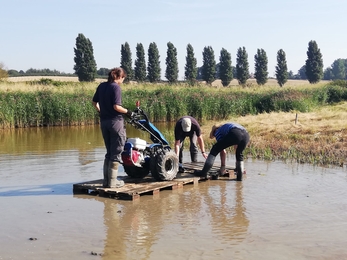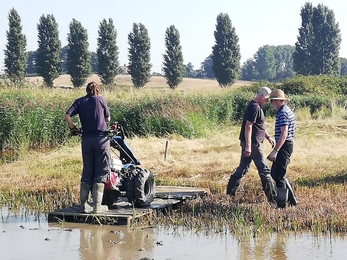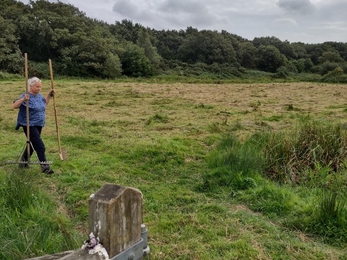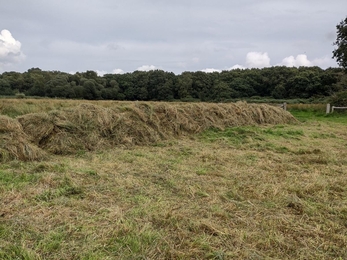Weekly wild news from our reserves – 17 September 2021
Toolbox Marketing Green Team at Newbourne Springs
Our volunteer work party helped Warden Charlie to finish off the vegetation clearance on the islands at Levington Lagoon. This work prepares the lagoon islands with short grassland serving as safe roosting space for waders and waterfowl in the autumn and winter months.
Sawfly larvae
Sawflies are part of the insect order, Hymenoptera, together with bees, wasps and ants. However, they differ from the bees, wasps and ants in not having a 'waist' and in the arrangement of veins within their wings (venation). Most female sawflies possess 'saw-like' genitalia which they use to cut through plant tissue in order to lay their eggs which later become larvae as captured in this photograph. In Britain there are around 107 different genera and about 500 species.
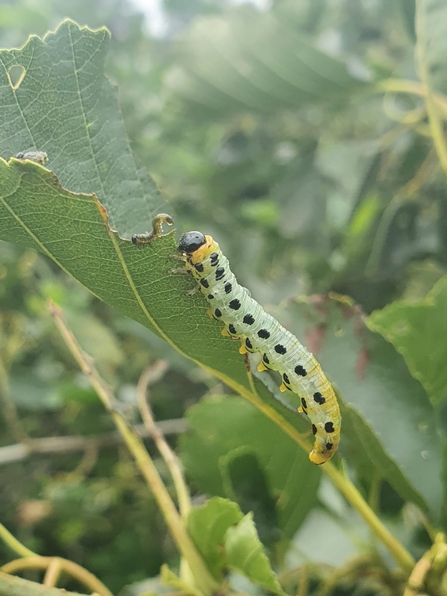
Sawfly larvae at Lackford Lakes - Joe Bell-Tye
Lawnmower on steroids
Whilst on a rare visit to the Trust's office at Brooke House this week, Alex Lack, Woodlands Warden was introduced to some of the Trust’s new staff. On being asked what he was up to this week, Alex mentioned he would be starting ride management at Bradfield Woods, an operation involving cutting back this year’s vegetative growth along the wide woodland paths (rides) to allow more light to reach the woodland floor and encourage greater botanical and structural diversity for next year. ‘So what do you use to do that?’ asked one of us. ‘It’s like a lawnmower on steroids!’ said Alex.
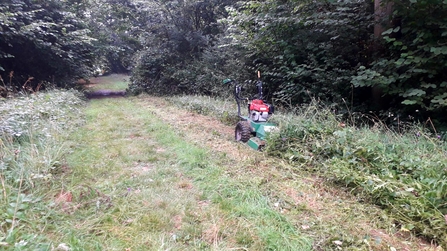
Ride management at Bradfield Woods - Alex Lack
Raspberries and cream on the fen
Hemp-agrimony is a tall, perennial plant found in damp grassland, marshes, fens and wet woodlands, and along riverbanks. A big thank you to Debs Crawford for sending in this image of the plant on display at Redgrave & Lopham Fen. The frothy, pinkish flower clusters appear from July to September and are very attractive to all kinds of insects, including butterflies like the small tortoiseshell and red admiral. Its common name comes from the resemblance of its leaves to hemp, although it is not related to it. Hemp-agrimony is a bushy plant with trifoliate leaves (with long, toothed leaflets) that appear in opposite pairs along its reddish stems. These stems end in domed clusters of ‘frothy’, tubular, pink flowers making it known as the 'raspberries and cream' plant.
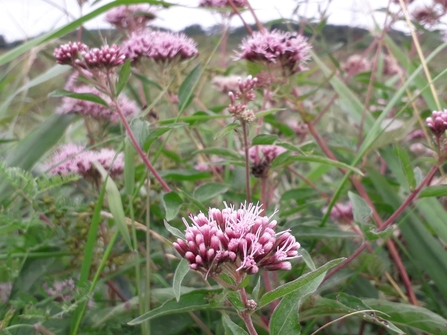
Hemp agrimony - Debs Crawford
Spreading seed at Snape
Our amazing ‘Green Snape’ volunteers moved masses of cut material from a botanically rich grazing marsh at Snape Marshes recently, clearing it ready for next year. They also collected southern marsh orchid seeds from that area a couple of weeks ago, scattering them elsewhere on site to encourage spread.
Green Team at Newbourne Springs
The team at Toolbox Marketing assisted with fen meadow clearance at Newbourne Springs during their Green Team away day.
Business volunteering offers a unique and cost-effective alternative for an office away day and provides employees the opportunity to develop individual and team building skills whilst making a real difference for local wildlife. Green teams are a proven way to learn more about your team, boost morale and make a positive contribution to the environment.


